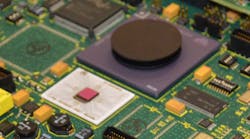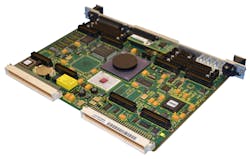This article is part of the TechXchange: Chip Shortages and Counterfeits
Download this article in .PDF format
From a designer’s perspective, what’s worse than having to deal with quality assurance? Answer: planning for sustainability.
This isn’t an issue for many projects, like some projects on Kickstarter where a single run of the product is all there is. Likewise, the high turnover in consumer products means the next model will replace the current one. On the other hand, most products have a longer lifetime. Military and medical equipment need to be available for decades. In these cases, price is less of an issue. But skyrocketing replacement or maintainability costs can make new technology more appealing.
Sometimes consumer product companies do think about their original customers. For example, Sony is following in the tracks of other PC vendors by selling its VAIO line. One class of product includes e-readers. Users could purchase e-books from Sony but now they will be directed to Kobo, a competitor that is still in that market.
Things get more difficult when hardware is involved, especially if the hardware is a bit more esoteric. A discontinued inductor or similar component fallout can force a complete redesign. This brings up issues associated with a new design such as recertification, which can be a long, risky, and costly process.
What To Do
GDCA, a firm that specializes in providing companies with proactive sustainment support, has five recommendations for designers:
- Plan sustainment early
- Budget for sustainment
- Identify your high-risk/critical components
- Manage the big picture
- Strategically plan your design refresh
Designers should start early because long-term support can be profitable with proper preparation. Sustainability usually is ignored until it is too late to do anything. Without these preparations, the higher costs of legacy components and redesigns will eat up any profit. Few can afford to buy a block of components before they are discontinued, and forecasting the amounts can be difficult at best. Storing the components is an issue too. Military products often are stockpiled with a fixed number ordered within a known timeframe.
Sometimes it makes sense to utilize FPGAs to replace discontinued ASICs or microcontrollers as GDCA did for the Emerson MVME 162 (see the figure). In these instances, an FPGA helps considerably. But software compatibility and hardware timing and loading issues also may need to be addressed.
Additionally, vendors need to worry about counterfeit components. Vendors also need to worry about those who are trying to sell counterfeit versions of their products. Counterfeit components are a problem even with new designs, especially when genuine versions are expensive or have limited availability. This is often the case for end-of-life (EOL) products based on these components. Identifying a source of genuine parts can be critical to supplying systems that work to spec.
Companies can turn to vendors like GDCA to implement IP-authorized products. These products would be based on your designs and software, but they are built and delivered by the third party, which has to worry about issues like component availability.
Identifying high-risk/critical components sometimes takes additional expertise too. For example, components may use materials that are rare or obtained from sources that are affected by war or politics.

